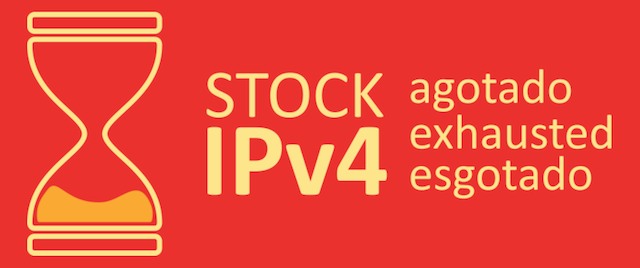My Ars Technica story about ARIN and LACNIC running out of IPv4 addresses.

Permalink - posted 2014-06-12
►
If you haven't seen this TED talk, go do that first: The paradox of choice by Barry Schwartz. Schwartz is a psychologist who talks about how having more choice isn't always a
good thing.
This applies to networking, too. If you have a router connected to (say) two ISPs with BGP, for every destination on the internet, your router now has to decide whether to send packets over ISP A or ISP B. If your router consistently makes the right choice, you're better off than someone who is only connected through one ISP. But if your router consistently (or just mostly) makes the wrong choice, your performance will actually be worse than someone connected through one ISP!
Unfortunately, the BGP protocol has a very limited notion of what is best. This means that in practice, it's a good idea to not leave BGP to its own devices, but rather check whether your router(s) at the very least avoid underperforming paths. However, this can be a lot of work.
An alternative is to use a system that automatically optimizes routing performance, such as the Noction Intelligent Routing Platform
Full article / permalink - posted 2014-06-10
▼
If you haven't seen this TED talk, go do that first: The paradox of choice by Barry Schwartz. Schwartz is a psychologist who talks about how having more choice isn't always a
good thing.
This applies to networking, too. If you have a router connected to (say) two ISPs with BGP, for every destination on the internet, your router now has to decide whether to send packets over ISP A or ISP B. If your router consistently makes the right choice, you're better off than someone who is only connected through one ISP. But if your router consistently (or just mostly) makes the wrong choice, your performance will actually be worse than someone connected through one ISP!
Unfortunately, the BGP protocol has a very limited notion of what is best. This means that in practice, it's a good idea to not leave BGP to its own devices, but rather check whether your router(s) at the very least avoid underperforming paths. However, this can be a lot of work.
An alternative is to use a system that automatically optimizes routing performance, such as the Noction Intelligent Routing Platform:
Acting as a route reflector, Noction IRP can improve BGP routes, reducing packet loss and latency rates with over 40%. The platform can also proactively re-route outages and blackouts, improving the overall network performance for enterprises connected to multiple service providers. Aside its performance improvement worth, Noction IRP delivers Exquisite reporting options, enabling operations to see exactly what happens to their traffic in the internet's mid-mile.
Noction will be sponsoring this website, please check out their web page and see if the IRP fits your needs.
Permalink - posted 2014-06-10
Interesting presentation by Marc Heuse at Hack in the Box 2012: bugs in IPv6 implementations, differences between IPv4 and IPv6 filtering by large websites, discovering IPv6 systems without brute force address scanning. Did you know that on 63% of networks the ::1 address replies to pings on at least one subnet? And then the hacker security researcher knows which subnets are live.
Video at Youtube (64 minutes).
Slides.
Permalink - posted 2013-12-18
According to Olivier Bonaventure, Apple is using Multipath TCP (MPTCP) so that iOS 7 devices can communicate with the Siri servers over both Wi-Fi and 3G/LTE at the same time. If you want some background, see this article in the IETF Journal about MPTCP that I wrote in 2009.
Permalink - posted 2013-09-19
►
On Tuesday October 8, 2013, I'll be teaching the new IPv6 routing course for the first time. I'm very excited about this new training course!
Full article / permalink - posted 2013-08-20
▼
On Tuesday October 8, 2013, I'll be teaching the new IPv6 routing course for the first time. I'm very excited about this new training course!
Several times a year I teach two training courses in cooperation with NL-ix: a BGP training course and an IPv6 training course. The thing that makes our BGP training course unique is that half of it consists of the participants getting their hands dirty configuring BGP on a Cisco router. But until now, the IPv6 course was basically just me explaining IPv6 and showing a few examples.
But we now have a new, improved IPv6 training course: the IPv6 routing course. Just like the BGP course, people who participate get the chance to configure IPv6 on a Cisco router. These are the topics covered:
- IPv4 depletion
- IPv6 basics
- types of IPv6 addresses: global, link local, site local, unique site local
- RIPE policy differences between IPv4 and IPv6
- making an IPv6 addressing plan
- stateless autoconfiguration vs DHCPv6
- tunnels
- OSPF for IPv6 (OSPFv3)
- BGP for IPv6
- coexistence and interaction between IPv4 and IPv6 in BGP
- Cisco IOS:
- using ping and traceroute
- monitoring BGP status and progress
- inspecting routing tables and BGP tables
- changing next hop addresses where necessary
- enabling/disabling stateless autoconfiguration
- router advertisement flags and DHCP server or relay
The course is one day from 10 in the morning until about 4:30 in the afternoon at the NL-ix offices in The Hague. Note that the course will be in Dutch. Later this year we'll have one in English. The day before (Monday the 7th) we have our BGP course. Please see the NL-ix website for full details.
Permalink - posted 2013-08-20
Turns out that there is a video book review of my BGP book. It came out three years ago but I just found it. At 59 seconds it's short and sweet, so if you have Flash installed, check it out.
Permalink - posted 2013-07-21
older posts
- newer posts

